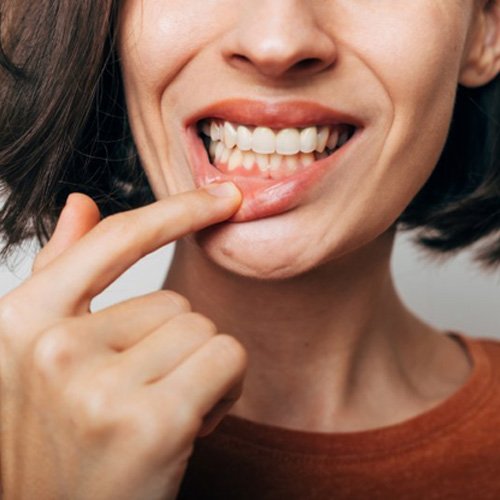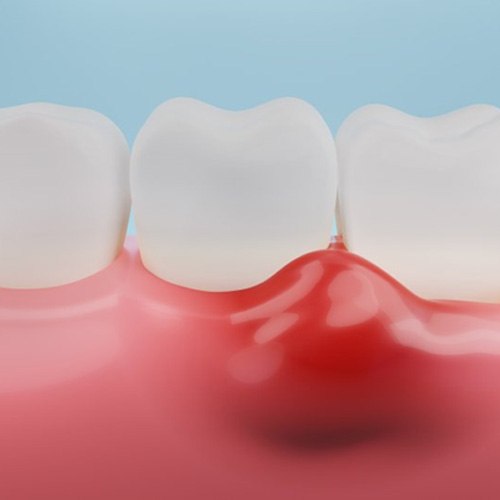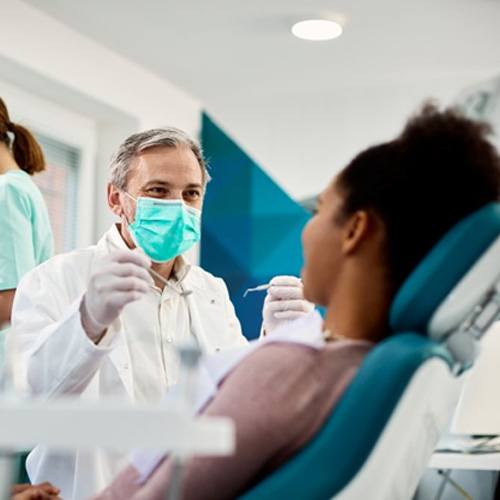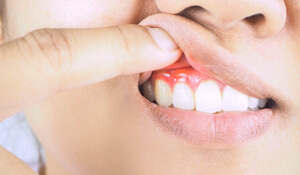
Gum Disease Treatment – Indian Land, SC
Modern Dentistry to Resolve All Gum Disease
Gum disease has become one of the most common chronic conditions in the United States and around the world. It’s the leading cause of tooth loss in adults and a surprisingly high percentage of them have some level of periodontitis, the more advanced form of the condition. With modern solutions from Dr. Candon, your journey to positive gum health can continue. To begin your periodontal therapy in Indian Land, SC, call our dental office!

Why Choose BridgeMill Dental Care for Gum Disease Treatment?
- Antibiotic Therapy to Accelerate Healing
- Soft Tissue Laser Therapy Available
- Nitrous Oxide Sedation Dentistry Provided
What Is Gum Disease?

According to the Centers for Disease Control, nearly half of all adults over thirty and more than 70% of seniors have some form of gum disease. These illnesses are the result of bacteria infecting the gums and bone structure that supports the teeth. The first stage of gum disease is gingivitis, or inflammation of the gums, and this can usually be reversed with improved oral hygiene. However, untreated gingivitis will eventually become periodontitis, which causes permanent damage and requires professional dental intervention. You’re more likely to develop gum disease if you:
- Use tobacco
- Have poor oral hygiene
- Are genetically predisposed to it
- Have conditions like diabetes that compromised the immune system
- Take medications that cause dry mouth
- Are pregnant
Symptoms of Gum Disease

Gum disease can show itself through a variety of symptoms. Gingivitis can result in:
- Chronic bad breath (halitosis)
- Swollen or red gums
- The gums bleeding during brushing or flossing
- Tenderness in the gums
- Dark red gums
- Gum recession
Symptoms of periodontitis include:
- Painful chewing
- Permanent teeth coming loose
- Dental sensitivity resulting from gum recession
- Changes in the bite
- Restorations like partial dentures or bridges feeling loose
- Permanent tooth loss
How Do We Treat Gum Disease?

Dr. Candon will begin the gum disease treatment process by thoroughly examining your mouth to determine the severity of the problem. Once he knows what he’s dealing with, he will explain your treatment options so you know what will happen and what to expect afterward.
Scaling & Root Planing

Scaling and root planing is essentially a cleaning that is taken to the next level. It is the most common gum disease treatment out there. During the scaling and root planing process, plaque and tartar need to be removed from areas above and below the gum line. Scaling is intended to remove calcified plaque from underneath gum tissue, preventing the infection from spreading or worsening. Root planing involves smoothing out the roots of teeth so they can better reattach to the gums and be less likely to become infected later. Continue reading to learn more!
Do I Need Scaling & Root Planing?

Scaling and root planing is often referred to as “deep cleaning.” If we notice any early signs of gum disease, including bleeding, swelling, or inflammation, we will address it as quickly as we can to prevent it from progressing further and resulting in permanent damage to your smile. This treatment aims to remove bacteria built up around and beneath the gumline. During the root planing portion of the treatments, the roots are smoothed down to allow your gums to reattach to the teeth.
The Process of Scaling & Root Planing

Scaling and root planing normally take place over two separate appointments. The first one consists of the “scaling” part of the process. During this visit, we will scrape away the plaque and tartar that have formed along and beneath the gumline using dental instruments.
Once the scaling portion is complete, we will move on to the root planing. We will do this by smoothing sections of the teeth that are normally hidden beneath the gum tissue. This will allow the gums to adhere to your teeth more easily, making it more challenging for bacteria to accumulate again. This reduces your risk of developing gum disease again in the future.
Aftercare Tips for Scaling & Root Planing

Some soreness of the gums is to be expected after scaling and root planing. You may also have some minor inflammation in the affected area. This is temporary and should resolve itself after a few weeks. Here are some tips to help you recover quickly:
- Brush twice daily with a soft-bristled toothbrush
use a saltwater rinse after eating - Floss thoroughly every day
- Stick to soft foods 48 hours after your treatment
- Avoid foods that are spicy, acidic, or hot
- Refrain from intense physical activity right after treatment
Antibiotic Therapy

While gum therapy begins at the dental office, it certainly doesn’t end there. Following your scaling and root planing treatment, Dr. Candon will apply an antibiotic directly to your gums in order to promote healing of the gum tissue. By applying the antibiotic directly to the deep pockets formed in between your teeth, we can accelerate the healing process and reduce the risk of your gums becoming re-infected after already completing a portion of your scaling and root planing therapy.
Laser Periodontal Treatment

If you fear the idea of completing gum disease treatments, you’ll be happy to learn that Dr. Candon incorporates laser dentistry into his dental office. The soft tissue laser he uses is specifically designed to make gum therapy more comfortable, precise, and easier to complete. It also reduces the symptoms that can accompany aftercare, including soreness of the gums. Alternatively, laser dentistry can be used to make adjustments to your gum tissue’s appearance, making your smile look fuller and more even.